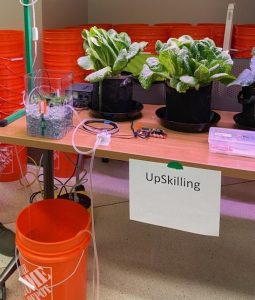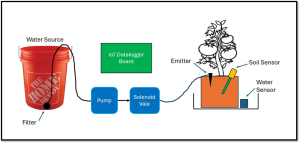Overview and Learning Objectives
Overview
Now that you are familiar with using the sensor technology, we will next learn how to hook up a watering pump to create an auto-watering system. The successfully set up system will detect when your potted plant’s soil moisture has dropped low enough that it needs irrigated (watered). The sensor will “talk” with the pump and turn it on. An overflow sensor tells the pump when to shut off, so not to flood your plant or your classroom.
Learning Objectives
After completing this lesson, you will be able to:
-
Build a smart irrigation system that uses soil moisture sensors and the datalogger board to automatically water a potted plant when the soil gets below a user-defined moisture content (trigger point).
-
Define two control parameters for the automatic system to work:
-
Soil moisture trigger point – For example, the user could set the trigger point a 60%. When the sensor shows % field capacity is below 60, it will turn on the water pump.
-
Irrigation duration – the number of seconds (i.e., volume of water) to apply water when an irrigation is triggered.
-


